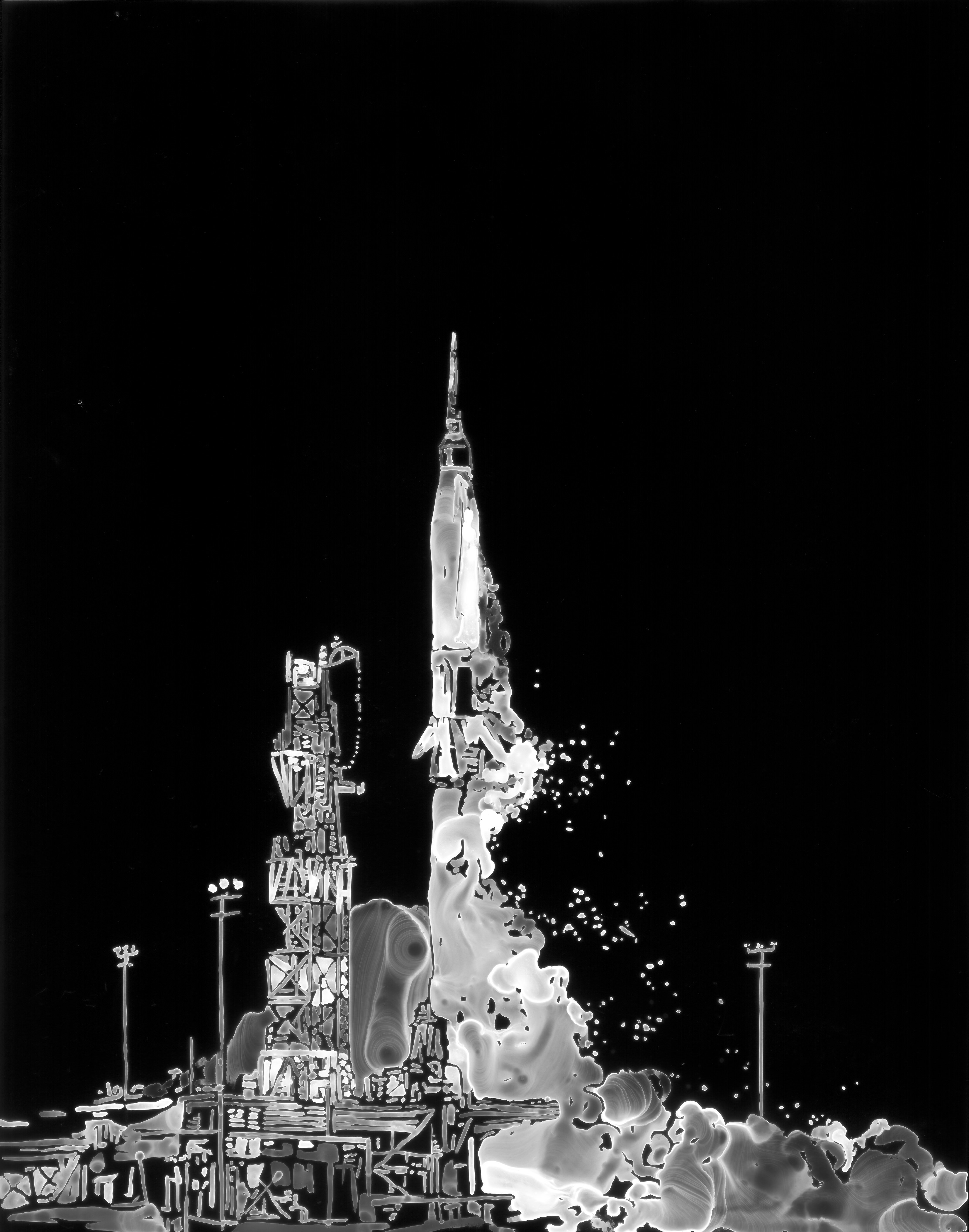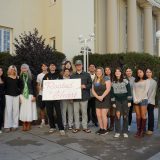Solar Selfies 2020 Acquisitions by Lia Halloran
December 8, 2020
The Escalette Collection is excited to announce two new acquisitions from artist and Chapman professor, Lia Halloran.
Friendship Launch, After Katherine Johnson was named as an homage to Katherine Johnson, a human computer who worked for NASA in the 1960s. In this photographic print, Halloran merges art and science to capture America’s enthusiasm about space during the Space Race and later years. Halloran is passionate about re-focusing the history of science on the stories of those often overlooked: women and people of color like Katherine Johnson. You can hear Halloran discuss this work in further depth here.

Lian Halloran, Friendship Launch, after Katherine Johnson, 11 x 14” silver gelatin cliché verre print from painted negative, 2020. Purchased with acquisition funds.
This “conceptual alignment” of highlighting unrecognized people is found in Halloran’s other works in the Escalette Collection. Triangulum, After Adelaide Ames (on display in the Keck Center for Science and Engineering) is named after the 1900s astronomer Adelaide Ames, who co-authored a star classification system. Paper Dolls, both negative and positive versions (also located in the Keck Center) recognize little-known women in astronomy. The figures in these paintings are based on a photograph Halloran found while researching the human computers who worked in the Harvard College Observatory in the nineteenth and twentieth centuries.
“I am not a historian,” Halloran says, “but I’m trying to tell a story and make people interested with art.”
Solar is our newest acquisition and will be on display in Smith Hall soon. Halloran was invited to create Solar by the Simons Foundation, a scientific research think tank in New York City. Inspired by the Foundation’s Center for Computational Astrophysics, Halloran’s paintings represent various research foci, including planet formation, galaxy formation, gravity, and black holes. Halloran was particularly interested in exploring the sun as the ultimate universal and timeless constant. Halloran created several unique, preliminary paintings of Solar, one of which is now in the Escalette Collection.

Lia Halloran, Solar(positive), pt 15, Cyanotype on paper from painted negative, acrylic, and ink, 2020. Purchased with funds from the Escalette Endowment.
Like many of Halloran’s other works, Solar was created by painting a negative and using the cyanotype process to make a positive image. She calls this a “solar selfie,” as the cyanotype painting of the sun was created by light from the sun. This practice is determined by the position of the sun and the Earth in space, a process that reflects the astronomical imagery portrayed in her works. Cyanotypes are typically used as a photographic printing process, but by using this method to create paintings, Halloran resists the historically strained dialogue between photography and painting. By creating artworks about science, she also pushes against the divide between art and science. She believes that the two disciplines rest on the same foundation: curiosity about the natural world.
Halloran aims to create experiences and inspire dialogues with her artwork, to tell the stories of those who haven’t had their stories told before. She wants viewers to be curious and excited about that curiosity while recognizing potential biases, such as the belief that there are few women in science, or that they do not belong there. Halloran strives to explore the progress of science, while also exposing its facade of objectivity and history of discrimination.
—-
We invite you to explore all the works in the Escalette Collection by visiting our eMuseum.
Wilkinson College of Arts, Humanities, and Social Sciences is the proud home of the Phyllis and Ross Escalette Permanent Collection of Art. The Escalette Collection exists to inspire critical thinking, foster interdisciplinary discovery, and strengthen bonds with the community. Beyond its role in curating art in public spaces, the Escalette is a learning laboratory that offers diverse opportunities for student and engagement and research, and involvement with the wider community. The collection is free and open to the public to view.


